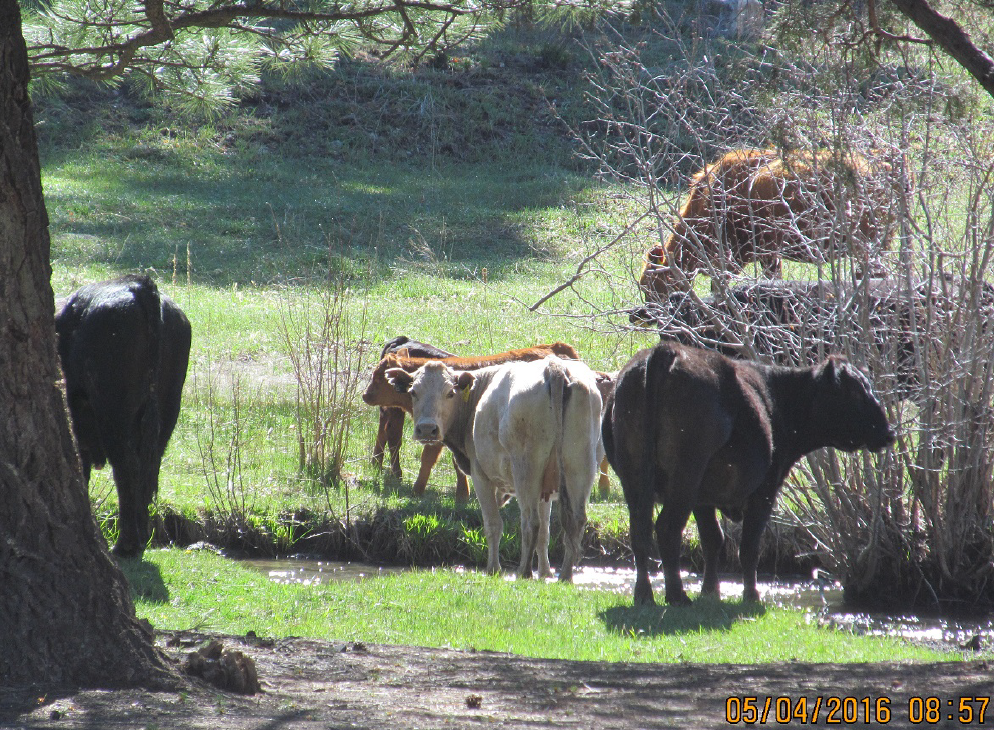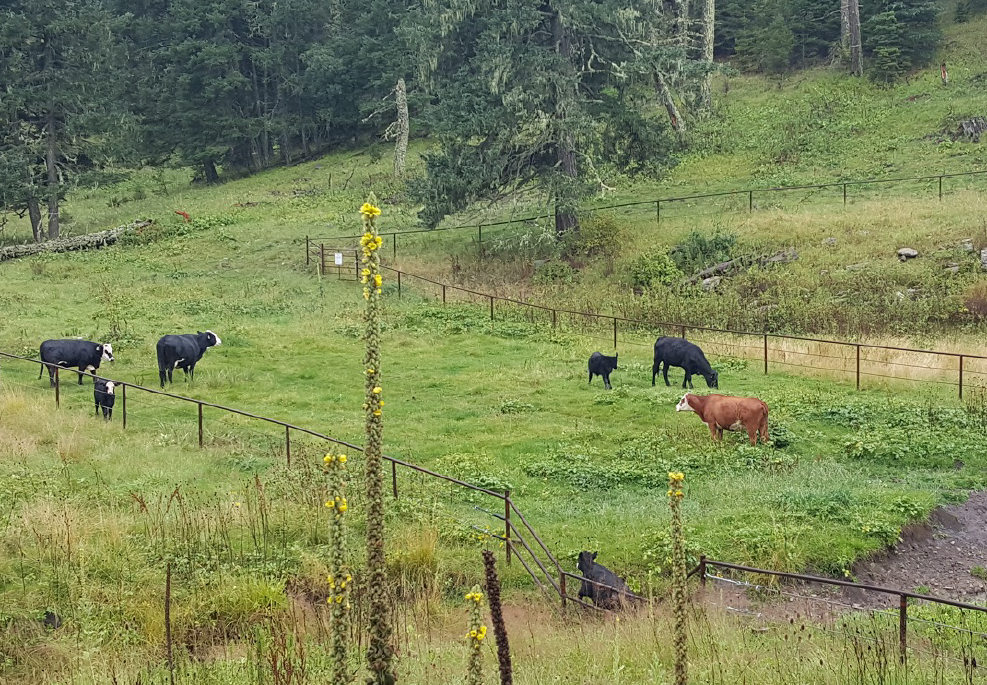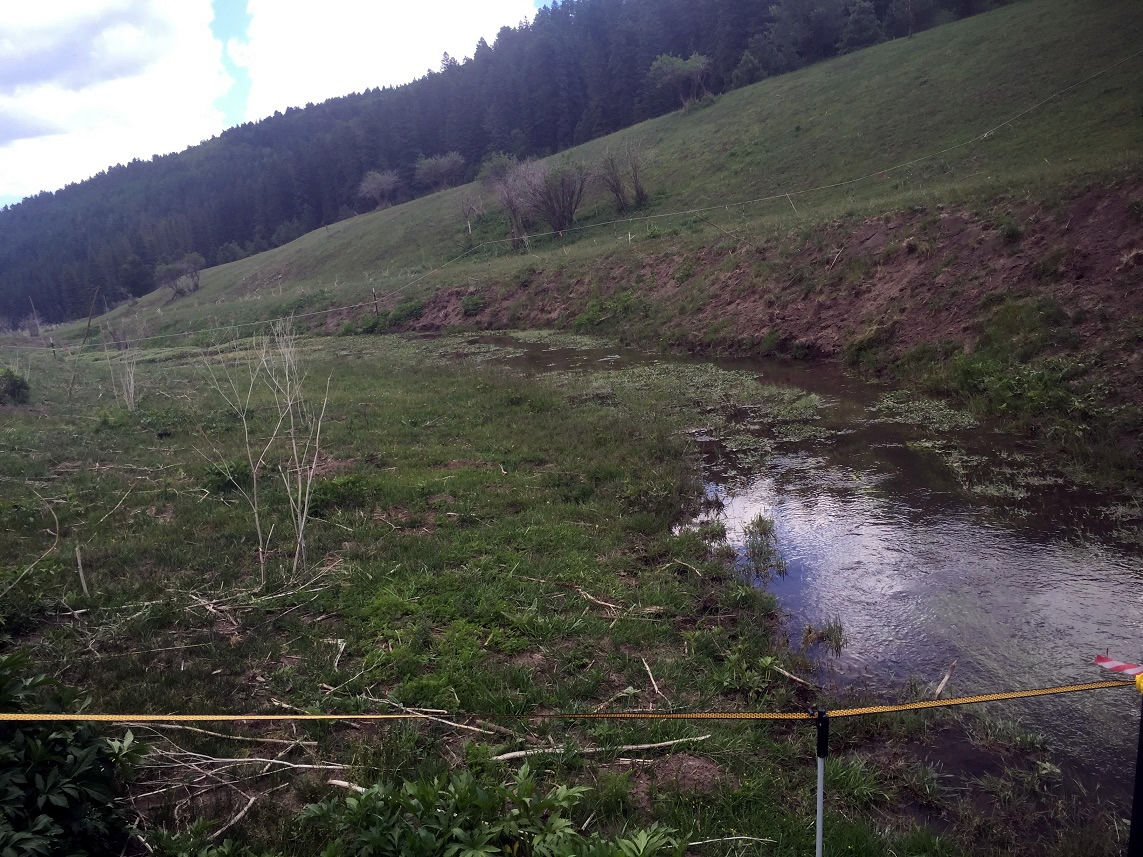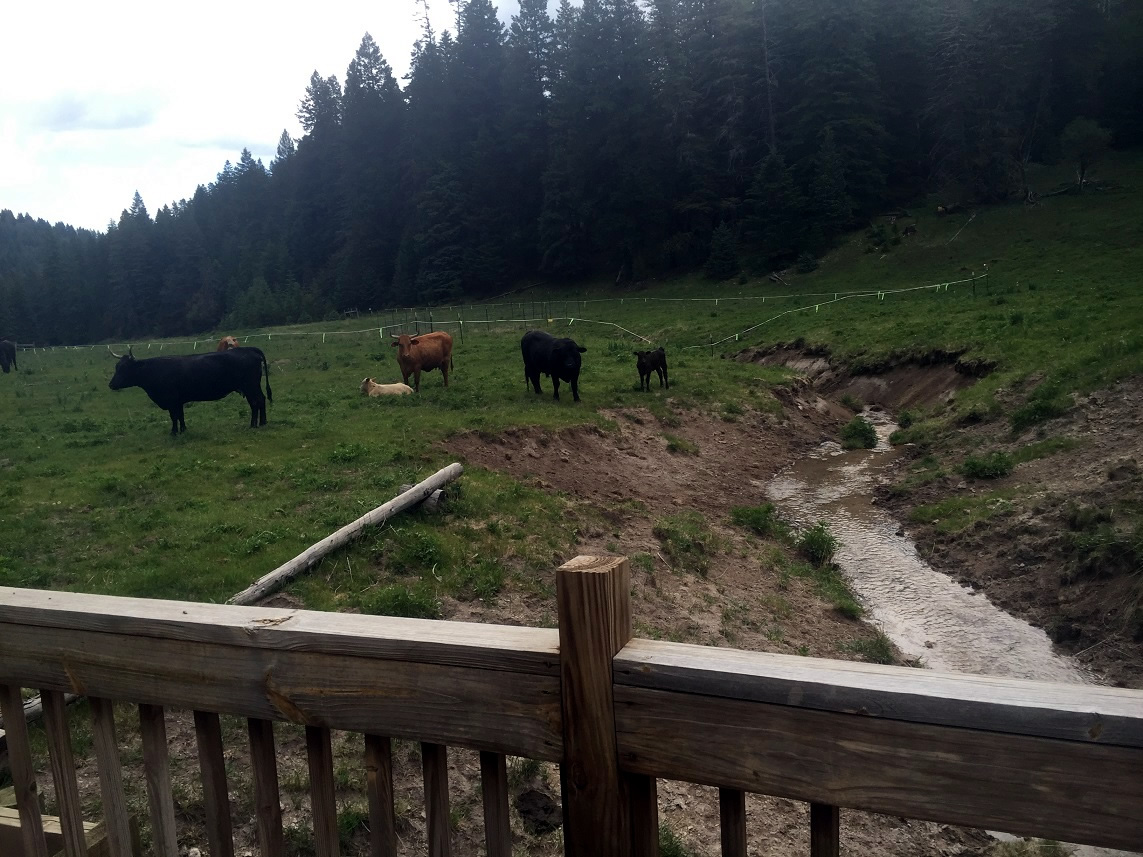New Mexico Meadow Jumping Mouse: Home Page
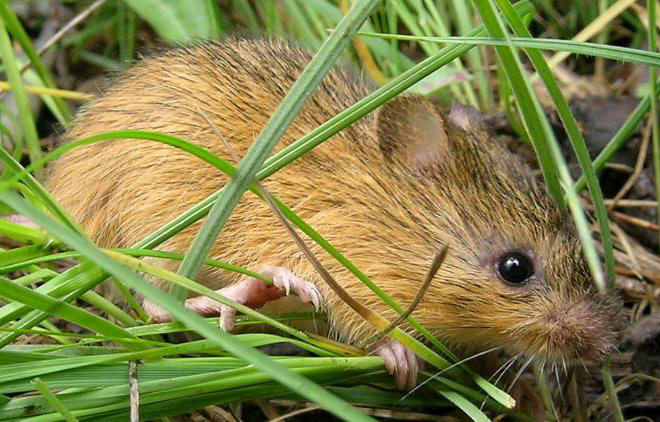
The NM meadow jumping mouse (jumping mouse) is a rare subspecies found primarily near streams and wetlands in parts of New Mexico, eastern Arizona, and southern Colorado. Threats to the jumping mouse and its habitat include grazing pressure, water management and use, lack of water due to drought/climate change, wildfires, and certain recreation activities.
State wildlife management agencies in Arizona, Colorado and New Mexico have considered the jumping mouse a species of management concern for several years. The State of New Mexico listed the species as Threatened in 1983 and upgraded it to Endangered status in 2006, where it remains today. On June 10, 2014, the U.S. Fish and Wildlife Service (USFWS) listed the jumping mouse as an endangered species, with an effective date of July 10, 2014. The need for the listing was attributed to a "significant reduction in occupied localities likely due to cumulative habitat loss and fragmentation across the range". On March 16, 2016, the USFWS designated critical habitat for the jumping mouse, with an effective date of April 15, 2016.
Species and Habitat Information
- Currently, the jumping mouse is found primarily near streams and wetlands in parts of New Mexico, eastern Arizona, and southern Colorado.
- Historical distribution likely included riparian wetlands along streams in the Sangre de Cristo and San Juan Mountains from southern Colorado to central New Mexico, including the Jemez and Sacramento Mountains and the Rio Grande Valley from Espanola to Bosque del Apache National Wildlife Refuge, and into parts of the White Mountains in eastern Arizona.
- The jumping mouse hibernates for approximately nine months (around mid-Sept to mid-June) out of the year. Therefore, it is only awake and active for about three months per year and must replenish energy, breed, rear young, and then accumulate sufficient fat reserves to sustain them through the next hibernation.
- The jumping mouse has very specific habitat requirements. It requires perennial or seasonally perennial water and saturated soils that produce tall (24+ inch) herbaceous riparian plants, and intact adjacent uplands.
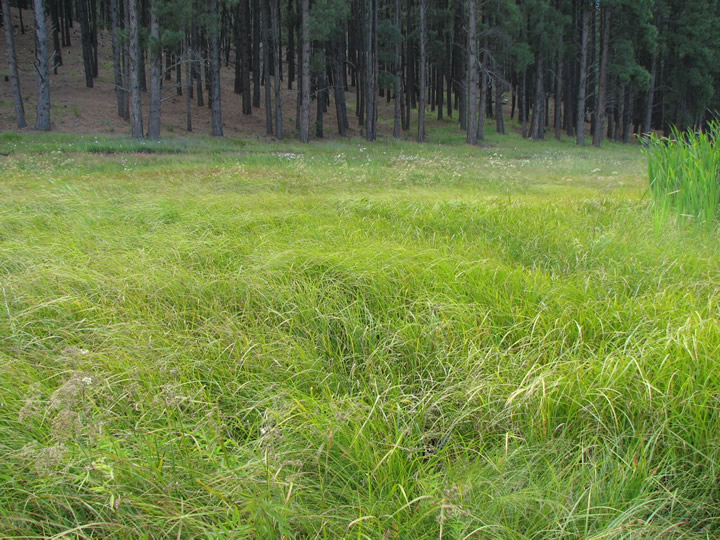
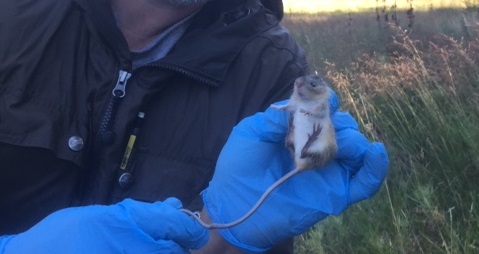
Background Information
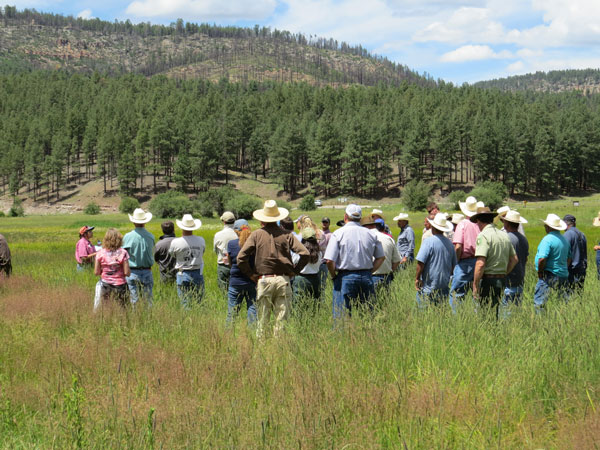
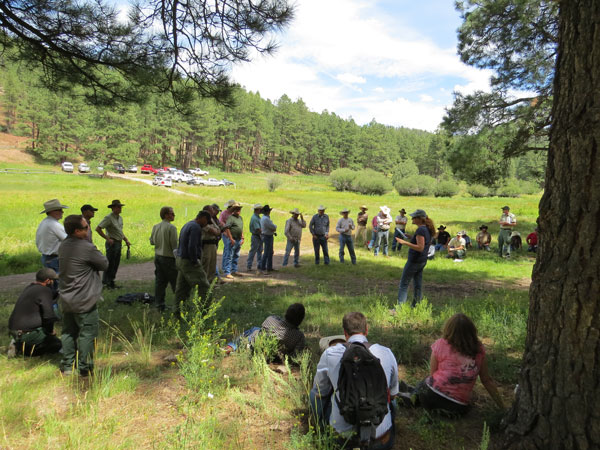
Some uses of national forests may affect the jumping mouse or its critical habitat when they occur in or along streams and wetlands, and when they do the USFS is required to enter into ESA Section 7 consultations with the U.S. Fish & Wildlife Service.
The Apache-Sitgreaves, Santa Fe, and Lincoln National Forests have populations of the jumping mouse and designated critical habitat units. There are approximately 7,713 acres (encompassing approximately 100 stream miles) among these three Forests that are within critical habitat. There are 14 allotments with permitted grazing in critical habitat.
The need to balance species protection and conservation along with multiple use was summarized by Federal District Court Judge Brack, when he denied a request to enjoin the Forest Service from erecting temporary protective fences in 2014, as follows:
"The Forest Service is facing a difficult decision. It will have to weigh its mandate to protect the mouse's habitat against the needs of local ranchers, recreationists, and other animals. The Plaintiffs greatly value their access to the grazing allotments. The surrounding communities greatly value the ranchers and their work. Ultimately, the Forest Service must consider the full panoply of human and environmental impacts."
In adapting our land management actions to accommodate the requirements of the Endangered Species Act, we have found it necessary to reduce or eliminate livestock grazing from some areas of NMMJM habitat, at least temporarily. This has been done by using new or existing fencing to control livestock access to riparian habitat. While taking these actions we have worked with affected stakeholders to ensure that all existing rights to water resources are respected. The NM Office of the State Engineer (OSE) manages the actual waters and their rights and the USFS works closely with them to ensure that water use, diversion and development meets OSE standards.
The Forest Service has worked extensively with the U.S. Fish & Wildlife Service and the ranching community in preparation for the listing of the species and on ESA consultations post listing, and is committed to continuing to do so in order to provide protection of the jumping mouse while maintaining public land ranching. Some of these coordination efforts include:
- The Forest Service provided extensive comments to USFWS regarding the listing and is actively exploring potential management and monitoring strategies for the jumping mouse.
- Staff members from the Southwestern regional office and the national forests have met with potentially impacted grazing permittees on the three national forests, and have included them as Applicants for the ESA consultations involving grazing.
- National Forest staff members have met repeatedly with affected grazing permittees and their representatives on the affected forest areas to ensure that protective measures for the NMMJM do not significantly hinder ranching operations.
- Regional USFS leadership has met with industry groups, including the New Mexico Cattlegrowers Association and Northern New Mexico Stockmans Association.
Management Actions
Specific forms of management (e.g. fencing of riparian areas, additional water developments, seasonal restrictions of certain activities, etc.) have been undertaken to ensure that public-land cattle grazing can continue in close proximity to protected NMMJM habitat. In addition, some NMMJM habitat will continue to be grazed at a level that is likely to provide at least some conservation value for the species.
Through collaborative efforts, adaptive management measures that provide for the protection of the mouse and the continuation of grazing have been developed and agreed to on 13 of the 14 allotments. The protective measures generally provide for exclusion of livestock grazing in most of the currently occupied critical habitat and a portion of the unoccupied critical habitat, and primarily consist of combinations of riparian exclosures, upland water developments, and other range improvements to reduce grazing pressure on riparian areas. No reductions in permitted numbers or significant change in season of use was required on any allotment. Permittees have access to all working facilities and water developments. Efforts to reach an approved solution on the final allotment are continuing.
Acres and Stream Miles Excluded
To show the effect on forage availability, Table 1 shows the total acreage of the grazing allotments, critical habitat, and critical habitat livestock exclosures on the Lincoln and Santa Fe National Forests. Less than 1% of acres has been excluded from livestock use, resulting in no adjustment to permitted numbers or seasons of use.
| Active Allotments with Critical Habitat | Designated Critical Habitat | Livestock Exclosures in Critical Habitat 1 | ||||
|---|---|---|---|---|---|---|
| National Forest | Total | Approx. Acres | Approx. Acres | % of Allotments | Approx. Acres | % of Allotments |
| Lincoln | 3 | 140,588 | 986 | 0.5 | 209 | 0.1 |
| Santa Fe | 6 | 180,212 | 2056 | 1.1 | 615 | 0.3 |
1Priority is given to known occupied areas, but is not necessarily limited to such.
Although very few total acres are excluded from grazing, the majority of currently suitable critical habitat, particularly occupied critical habitat, is excluded from livestock grazing. At the same time, there are still many miles of stream and numerous water lanes that provide access for watering cattle. Table 2 below shows the high percent of critical habitat stream miles in exclosures on the Lincoln National Forest, and the miles of stream access remaining in critical habitat. In addition to water access in critical habitat, there are many perennial stream reaches with water access outside critical habitat. No developed water diversions have been included in exclosures.
| CH Status | Livestock Accessibility | Stream Miles | % Stream Miles Not Grazed |
|---|---|---|---|
| Occupied | Open | 0.4 | - |
| Not Open | 2.9 | 88% | |
| Unoccupied | Open | 2.0 | - |
| Not Open | 8.0 | 80% | |
| All CH | 13.2 | 82% |
Water Gaps/Lanes
In many areas where access to streamside habitat by livestock is restricted, "lanes" or corridors are left open and allow cattle access to the much needed water found in these riparian areas.

Below are images of just some of the water gaps/lanes near exclosures on the Lincoln and Santa Fe National Forests where livestock have full access to water. Livestock have been utilizing these gaps extensively with no apparent difficulties.
